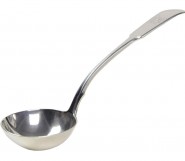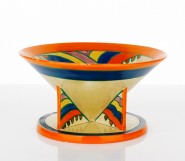Lot #12 - George French Angas
-
Auction House:Bonhams Australia
-
Sale Name:Important Australian Art
-
Sale Date:25 Nov 2020 ~ 6pm (AEDT)
-
Lot #:12
-
Lot Description:George French Angas
(British, 1822-1886)
Eaglehawk Gully, Bendigo, 1852
pen, brown ink and watercolour heightened with white
25.2 x 35.4cm (9 15/16 x 13 15/16in).
signed and dated lower left:'G.F.Angas./AUG 1852.'; titled lower right: 'Eagle Hawk Gully-Bendigo.' -
Provenance:Mrs F. E. Gubbins Collection (the artist's great granddaughter); Christie's, London, 2 November 1979, lot 149; Private collection, United Kingdom; thence by descent; Private collection, United Kingdom
-
Notes:One of only a dozen works on paper by the artist to be ever offered at auction, Eaglehawk Gully, Bendigo, belonged to the family and descendants of George Lansell (1823-1906) who was known as 'Australia's Quartz King'. A prominent mining entrepreneur in Bendigo, Lansell was largely responsible for introducing the diamond drill to quartz mining in Australia and known to be a proud 'Bendigonian'. After his death, the Bendigo community erected a statute of George Lansell, which still stands today, in admiration and gratitude for his 'indomitable courage and persistent enterprise'. The discovery of gold in Australia was to transform what had been convict colonies into large and diverse cities. Up until 1851, the colonial government of New South Wales had suppressed news of gold finds through concerns of economic destabilisation and workforce migration. However, with the Californian Gold Rush in full swing by 1850, migration from Australia had already commenced and the government reconsidered its position. Gold was discovered in Bendigo, then known as Sandhurst, in 1851 when Joseph Crook found a gold nugget. By 1852, a township had been established with a population that quickly swelled to 40,000. By the end of 1851, the Victorian gold fields had become the highest yielding in the world, and as AFA Greeves, then Chairman of the Victorian Gold Discovery Committee wrote in 1854: 'The discovery of the Victorian Goldfields has converted a remote dependency into a country of world wide fame; it has attracted a population, extraordinary in number, with unprecedented rapidity; it has enhanced the value of property to an enormous extent; it has made this the richest country in the world; and, in less than three years, it has done for this colony the work of an age, and made its impulses felt in the most distant regions of the earth.' 1 In 1850, George French Angas was settled in South Australia with his wife, Alisha Moran. With news of the gold discoveries spreading like wildfire, Angas travelled to the goldfields near Bathurst and throughout 1951 produced watercolours and lithographs of the New South Wales and Victorian goldfields. Published in Sydney, Views of the gold fields of Australia comprised six sketches, drawn by Angas on the stone, and depicting the hectic activity on the new goldfields. In correspondence with William Hogarth, a London based Printseller and Publisher, in late 1852, Angas writes of his works from gold fields, 'I have made a pilgrimage to the far famed Gold Diggings of Mount Alexander & Bendigo in Victoria, & now send you two exact water color sketches taken on the spot by myself, one, of Mt. Alexander diggings from Adelaide hill, Forest Creek – the other of the celebrated Eagle-Hawk Gully at Bendigo, which has turned out more gold than any other gully in the world. Every tent, & store with its flag, is exactly as it stood when I was on the ground, & all the figures are sketched from life, the coloring & co is true, but more distance may be observed in the lithographing - I am sure these views will be extremely valuable in England & I loose no time in sending them to you to be lithographed – I have lithographed them here for Colonial Sale, but we can only print 3 or 4 here from one stone on account of the warm climate – I will dispose of these drawings & the entire copyright of them to you if you will remit me £50, as I am sure they will command an enormous sale in Great Britain now that the gold excitement is so great, especially when it is known that they are the only views taken of these two famed diggings, the richest in the world. If you think it better for me you can divide the profits equally, but I really think I ought to be well paid for them as they are of such extreme interest and I had to undergo innumerable hardships & great expense to obtain them, beside a journey of 250 miles on foot, & sea voyages to and from Sydney.'2 Indeed, the resulting lithographs, now held in most Australian public collections, were exceptionally popular though an artist's life in Australia was precarious and in 1853, Angas accepted a position as Secretary and Accountant at the Australian Museum. Angas continued to work as an artist but it was his work at the Museum, as a preparator and conchologist, that set the pattern of his last years in Australia. Back in London by 1863, Angas wrote and published accounts of his time in Australia and the Pacific both illustrated with wood engravings after his sketches. Ultimately, his folios of lithographs, Six views of the gold field of Ophir, and Views of the Gold Regions of Australia, are considered the most significant graphic records of early Australian goldfield activity, and the first visual record of the beginning of the Australian gold rushes. Merryn Schriever 1. Report of the Committee on the 'Claims to Original Discovery of the Gold Fields of Victoria', Geelong Advertiser and Intelligencer, 23 March 1854, p. 4 2. Angus Family - Letters 1836-1877, State Library of New South Wales, Sydney
-
Estimate:A$60,000 - 80,000
-
Realised Price:
-
Category:Art
This Sale has been held and this item is no longer available. Details are provided for information purposes only.










